Ask Dovetail: A hackathon project that turned into the future of how teams consume customer insights
Tags
[update]
Published
13 October 2024
Content
Joe McLachlan
Creative
Tia Alisha
Share

As part of Dovetail 3.0, we’re proud to unveil Ask Dovetail—a reimagining of how organizations interact with the data in their customer insights hub. Ask Dovetail is an experience where you don’t have to be a power user, or even have a Dovetail account, to harness customer feedback.
As part of Dovetail 3.0, we’re proud to unveil Ask Dovetail—a reimagining of how organizations interact with the data in their customer insights hub. Ask Dovetail is an experience where you don’t have to be a power user, or even have a Dovetail account, to harness customer feedback.
Search or ask anything right from where your team is already making decisions and having discussions: Slack and Microsoft Teams. No more context switching. No more learning another tool. No more guessing what your users think. Simply Ask Dovetail, and receive instant insights.
This feature has been a long time in the making, and this is the story of how we built it, why we built it, and where we want to take it next.
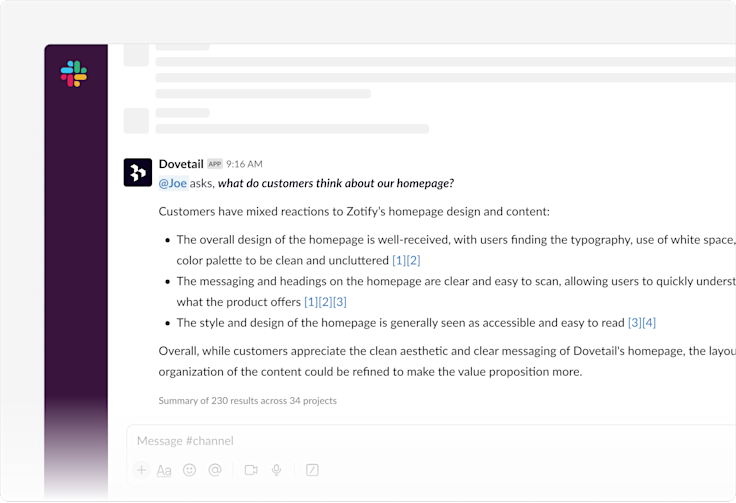
Ask Dovetail allows anyone in your organization to chat with your customer insights.
Design and prototyping
Twice a year we pause business-as-usual work to get creative. We call it Make It, and it’s where some of our best ideas are brought to life. One of our amazing customers, Instacart Lead Researcher Kaleb Loosbrock, was an early fan of our magic search feature, and asked about building integrations to surface it in Slack.
This feedback found its way to one of our Make It teams this year, and they set off to build the first working prototype of Ask Dovetail—simply called “magic search in Slack.“ After Make It, our product team—search and discovery—saw a lot of potential in this idea, and decided to make it a key piece of work for Dovetail 3.0.
The first thing we did was take a step back and understand the context from Make It. What are the known customer problems? What does success look like? What are the potential risks or challenges? What assumptions and beliefs do we have, and where are our knowledge gaps?
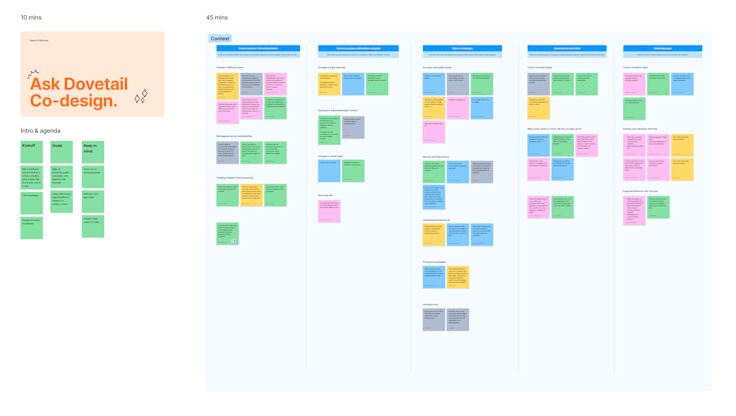
Using FigJam to understand what the Make It team had already learned and built.
We responded to a variety of how might we statements based on the problems we identified earlier and drew some rapid-fire concepts and broad-stroke ideas. This is when we came up with the essential concepts we implemented as key features in Ask Dovetail.
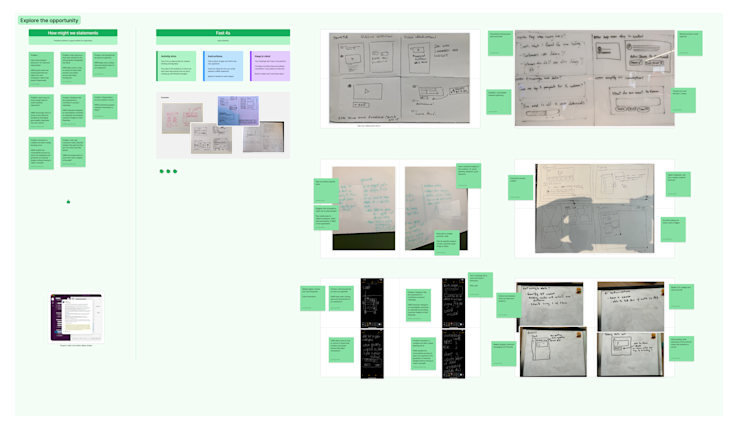
Our team’s ideation process—a combination of sketching and brainstorming.
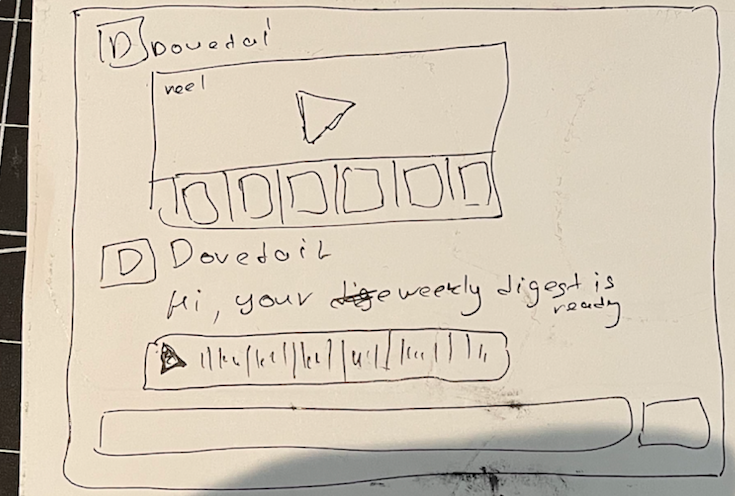
This was our first visualization of a digest.
Off the back of this co-design, we synthesized all of these ideas into two key concepts: having customer insights ‘pushed’ to you, or you needing to ‘pull’ them from Dovetail.
Pull interactions were features that the user had to actively engage with. It started with a simple workflow of inputting a query and getting a result (like magic search) and then evolved to a conversational experience.
Push interactions were features that proactively sent content, information, or messaging to the user in Slack, without them having to @-mention Dovetail. This felt like a whole new way to surface insights to everyone in the organization, no matter if they had a Dovetail account.
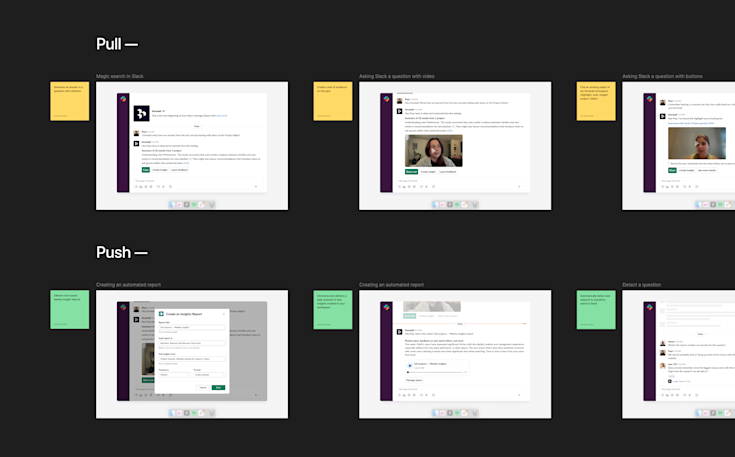
Our ideas categorized into push or pull interactions.
We brought these concepts to life with high-fidelity prototypes, getting a feel for how they would look and feel in the real Slack or Teams interface. We had a sense of what the highest value ideas were, but with our time limited to just a few months, we wanted to make sure we were prioritizing them in an order that made sense to our customers.
We talked to several customers; walking them through these ideas, asking for feedback. This helped us understand the role Slack and Teams played in their work as it relates to sharing and consuming insights.
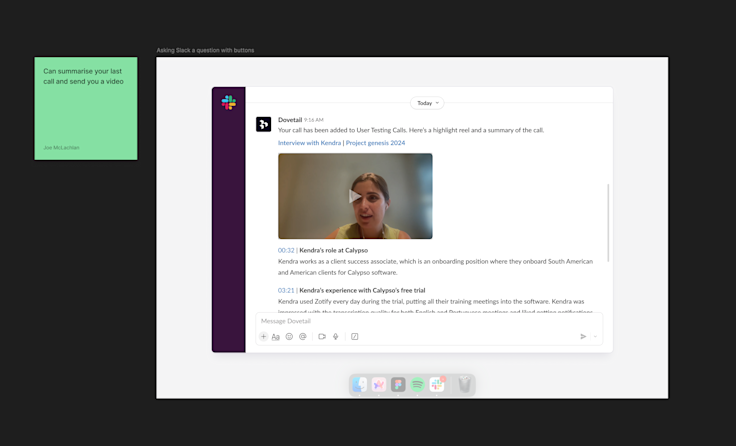
Some of the ideas, like instant call summaries, didn’t make the cut.
Our customers liked the idea of being able to ‘chat’ with Dovetail, but it wasn’t the thing they were most excited about. We saw customers’ eyes light up when we started discussing proactive push workflows—weekly podcasts with key insights delivered directly to stakeholders.
We had our roadmap. Make search available in Slack and Teams for all users, not just those with Dovetail accounts. Make it conversational, so people can dig deeper and clarify their questions. And introduce digests—an effortless way to keep up with your customers.
Development and testing
Integrating Dovetail with Slack and Teams wasn’t as simple as it sounds.
The first challenge was to create a seamless connection and setup process for our customers. We quickly realized the existing method for linking Dovetail workspaces to Slack—on a per-user basis—would be cumbersome and unintuitive. To address this, we designed a workspace-level integration. This allows a single Dovetail workspace admin to connect their entire Slack or Teams workspace to Dovetail with just a few clicks, ensuring a smooth and hassle-free experience for everyone.
For digests, we leveraged AWS Polly’s text-to-speech capabilities to convert search results from Dovetail into audio, injecting a personalized touch by using real customer quotes from calls. This made the digest not just an update but an experience that felt authentic and connected to the customer’s needs.
Launch and future
After two months of alpha testing with 15 customer workspaces and thousands of questions asked, our team is super proud to launch Ask Dovetail as part of Dovetail 3.0.
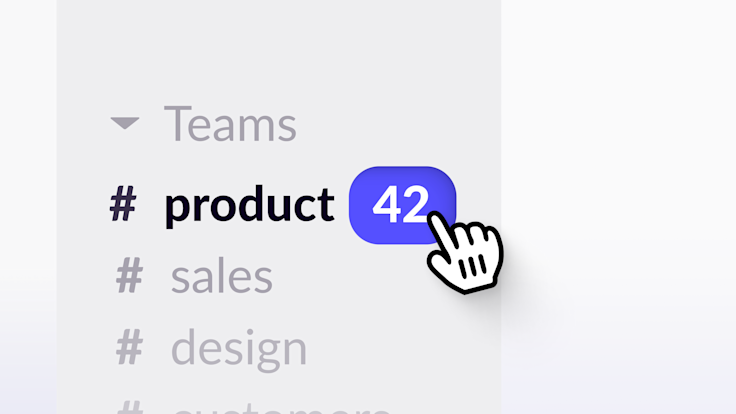
Insights delivered to the places people work.
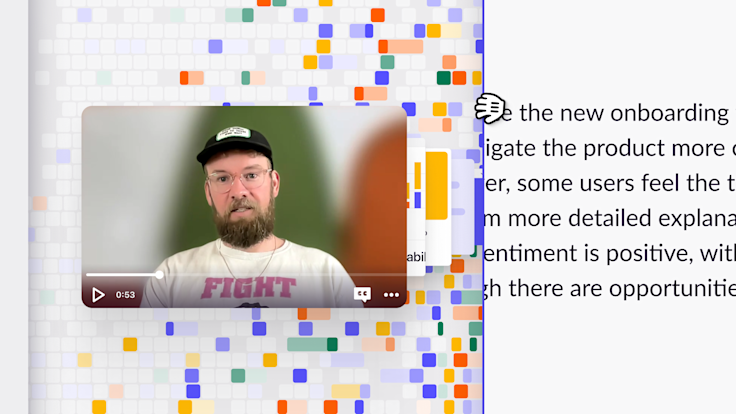
The real customers behind the automated answers in Ask Dovetail.
I’m immensely proud of what we achieved with Ask Dovetail and I can’t wait to see how it helps teams make more customer-centric decisions and build better products.
I’m just as excited to see how teams use Ask Dovetail in ways we haven’t yet designed for. Those emergent use-cases are often just as inspiring and help shape the future direction of the product.
We have a lot planned for where we want to take Ask Dovetail in the future, and indeed, search as a whole. For example, we know that Dovetail admins might want to control what data their stakeholders can return in a search. So we are working on more granular settings to exclude certain projects, insights, and other data types. Additionally, the underlying technology is advancing so quickly and user behavior is more or less step for step. The future of search can be so much more than questions and answers.
If that sounds interesting, stick around for the ride and be part of what we build next.
Ask Dovetail is available on our Enterprise plan. Check out this page to learn more or talk to our sales team to enquire about getting Ask Dovetail for your team.
Related Articles

